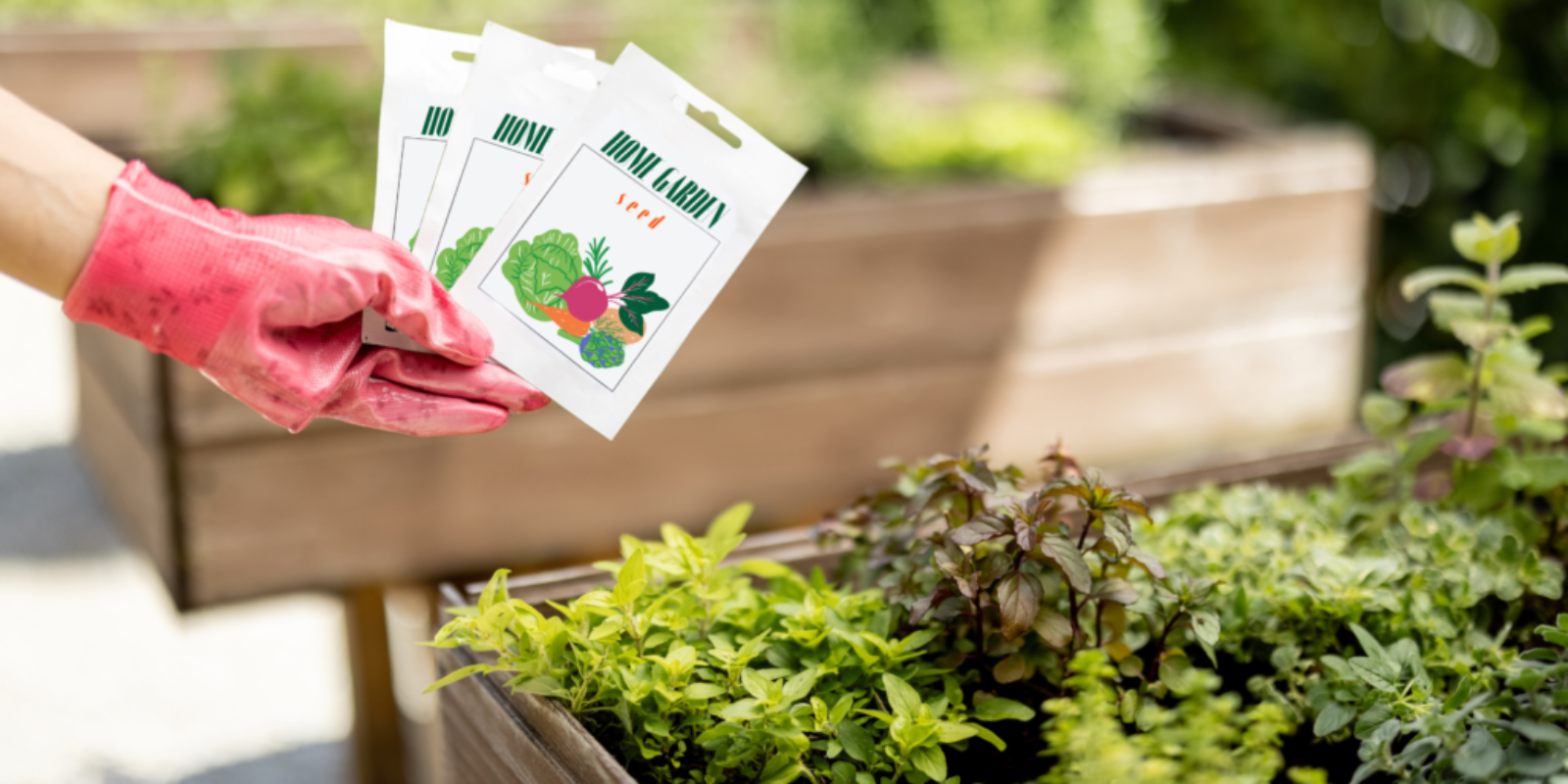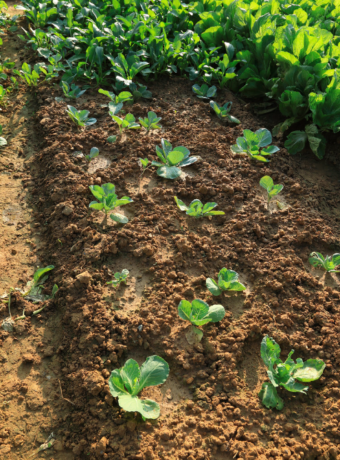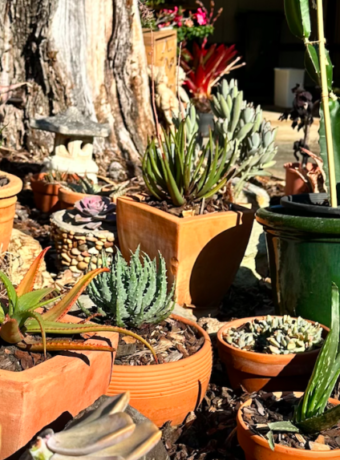Spring is an exciting time in the garden, and this pivotal season sets the stage for a sustainable and thriving garden, where the principles of permaculture come to life. If you’re not prepared, you might find yourself getting overwhelmed later, so it’s always a good idea to prepare for the season ahead! These are the 7 tasks I’ve been focusing on to get my garden ready for spring…
Soil Revitalisation
As spring arrives, temperatures rise, and the soil starts to warm up. This warmth encourages microbial activity and nutrient cycling in the soil. Microbes become more active, breaking down organic matter and making nutrients more available to plants. By revitalising your soil in spring, you set the stage for a productive growing season. Healthy soil provides essential nutrients and a supportive environment for plant roots to thrive, leading to more robust growth and higher yields.
Soil Assessment:
- Conduct a soil test to determine pH levels, nutrient deficiencies, and soil composition.
- Observe soil texture (sand, silt, clay) and drainage patterns.
Organic Matter Addition:
- Apply compost to improve soil structure, moisture retention, and nutrient content.
- Consider adding well-rotted manure or other organic materials to enrich the soil.
Cover Cropping:
- Plant cover crops like legumes, clover, or buckwheat during off-seasons to prevent soil erosion and add organic matter.
- Rotate cover crops to provide different benefits throughout the year.
Composting:
- Create a composting system for kitchen scraps, yard waste, and plant trimmings to generate nutrient-rich compost.

Seed starting & propagation
Spring provides near-ideal conditions for seed germination and plant growth. As temperatures rise, soil becomes warm enough for seeds to sprout, while daylight hours increase, providing ample sunlight for photosynthesis. This combination of factors accelerates plant growth, helping your seedlings establish themselves quickly. Starting seeds in the spring allows you to extend your growing season. By the time the last frost date has passed, your seedlings will be ready to transplant into the garden, giving them a head start on the growing season. This can lead to earlier harvests and more productive gardens.
Seed Starting:
- Gather seed trays, pots, or containers with good drainage to start seeds.
- Gradually acclimate seedlings to outdoor conditions by placing them outdoors for increasing periods each day.
- Transplant seedlings into the garden when they have developed strong roots and several sets of true leaves.
Propagation:
- Research and choose suitable propagation methods such as cuttings, layering, division, or grafting.
- Gather necessary tools and materials for each propagation technique.
- Take cuttings from healthy parent plants and propagate them in well-draining soil.
- Divide mature plants by separating their root systems and replanting them in new locations.

Crop rotation & thoughtful planning
As the weather warms and daylight hours increase, it’s the perfect time to assess your garden space and plan for the upcoming growing season. Begin with a clean slate by removing any remaining debris from the previous year’s crops. Many plant diseases overwinter in the soil or on plant debris. Spring planting rotations disrupt the life cycles of these pathogens, reducing the likelihood of disease outbreaks in your garden. This proactive approach can help you avoid common problems like tomato blight and clubroot.
Understanding Crop Families:
- Familiarise yourself with common crop families to group plants with similar nutrient needs and growth patterns.
Mapping Garden Zones:
- Divide your garden into zones or beds to facilitate proper rotation. Label each zone to keep track of previous plantings. You might use the permaculture zones, or zone according to water needs, sun exposure, and accessibility.


Perennial Integration:
- Integrate perennial plants such as fruit trees, shrubs, and perennial herbs strategically for long-term benefits.
Succession & Companion Planting:
- Plan for successive plantings to ensure a continuous harvest throughout the growing season.
- Arrange companion plants that support each other’s growth, deter pests, or enhance soil health.

Mulching for optimal growth
Spring can bring erratic weather patterns, including periods of rain followed by sunny, warm days. Mulch helps retain soil moisture by reducing evaporation. This is especially valuable as plants in your garden start actively growing and require consistent moisture to establish themselves. Spring is also a season when weed seeds often germinate and compete with your desired plants for space, nutrients, and water. Applying mulch in early spring creates a barrier that inhibits weed growth. This reduces the need for time-consuming and labor-intensive weeding. Additionally, the soil may still recovering from the winter cold, depending on where you live. Mulch acts as an insulator, helping to regulate soil temperature. It keeps the soil warmer during cool nights and cooler during hot days, creating a more stable and favourable environment for plant roots.
Choose the Right Mulch:
- Select appropriate mulch materials such as straw, wood chips, leaves, grass clippings, or compost.
Site Preparation:
- Clear the area of weeds, debris, and large rocks before applying mulch.
Weed Management:
- Weed the area thoroughly before mulching to prevent weeds from growing through the mulch.
Soil Moisture Check:
- Water the soil thoroughly before applying mulch to ensure it’s adequately moist.
Mulch Thickness:
- Apply a layer of mulch that is 2-4 inches thick for most plants.
- Keep mulch away from plant stems to prevent stem rot.

Staking & repotting plants
Spring is the beginning of the growing season for many plants. Repotting during this time allows plants to take advantage of the fresh potting mix, nutrients, and increased root space as they actively grow and flourish. As many plants start to grow rapidly, especially those that are perennials or have been overwintered indoors, staking them early in their growth phase helps provide essential support to prevent them from leaning, bending, or breaking as they develop.
Repotting:
- Choose a slightly larger container with good drainage to accommodate the plant’s root system and growth.
- Prepare a well-draining potting mix suitable for the specific plant type & consider adding compost or organic matter to improve soil structure and nutrient availability.
- Carefully remove the plant from its current container, gently loosening any compacted roots if necessary. Position the plant in the new container at the same depth it was previously planted.
- Water the repotted plant thoroughly to settle the soil and provide hydration to the roots but avoid overwatering, which can lead to root rot.
Staking plants:
- Determine if your plants require staking based on their growth habit and susceptibility to falling over.
- Gather appropriate staking materials such as bamboo stakes, metal rods, or trellises.
- Use soft and flexible ties like twine or cloth to secure plants to stakes.

Mindful water usage
As the new season marks the beginning of increased water demand in gardens and landscapes, by taking proactive steps to manage water efficiently during spring, you can conserve this precious resource, promote sustainability, and maintain healthy plants.
Soil Moisture Monitoring:
- Regularly check soil moisture levels using a moisture meter or by feeling the soil with your fingers.
Deep Watering:
- Water deeply and less frequently to encourage plant roots to grow deeper into the soil.
Time of Day:
- Water plants early in the morning or late in the afternoon to minimise water loss due to evaporation.
Hand Watering:
- Use a watering can or hose with a spray nozzle for precise and controlled watering.
Avoid Overwatering:
- Adjust watering frequency based on weather conditions, plant needs, and soil moisture.

Pest & disease prevention
As the weather warms up and plants begin to grow vigorously, both beneficial and harmful insects become more active. Being proactive in spring can help you prevent pest problems from escalating and protect your plants. By addressing pest issues early in the season, you can prevent infestations from becoming severe and damaging your plants.
Observation:
- Regularly inspect your plants for signs of pest damage or disease. Early detection is key to effective management.
Trap Crops:
- Plant trap crops that attract pests away from your main crops, allowing you to manage them more effectively.
Beneficial Insects:
- Encourage beneficial insects like ladybugs, lacewings, and parasitic wasps that prey on pests.
Physical Barriers:
- Use physical barriers like row covers, netting, or screens to protect plants from pests.
Hand Picking:
- Remove pests by hand when possible, especially in smaller gardens.
Natural Sprays:
- Use homemade or commercial organic sprays containing ingredients like neem oil, garlic, or insecticidal soap




